Every saint has a past.
Every sinner has a future.
I love redemptive heroes. I really do. As much as I wish I could be as brave and bold as the Leaders, as much as I am very much the techie and so identify with the Engineers, and as much as I full well know the struggle of having to assert my personhood, I have a strong admiration for the heroes who are seeking redemption. There really are more to my list than the ones I posted originally, but in the interest of time and also not wanting to beat a horse to death, I abbreviated the list. Besides, I think the heroes that I have chosen capture the essence of the notion of redemption.
The nature of the redemption that is sought varies to different degrees. Some of them are killers, others are thieves, some still are traitors. All of them are looking to be forgiven for something that have done or failed to do.
Story of our lives, isn’t it…
“Megaman X” is a series of games that is the even-further-futuristic follow up to the futuristic Megaman. X is a whole new character, different from the original Blue Bomber, and he is full of potential. His opposite is Zero, built by Dr. Wily, the primary antagonist. Whereas Dr. Wily usually built Robot Masters and vehicles that Megaman could defeat with relative ease, this was a massive departure. There is a bit of speculation and mystery, as events are shrouded by the fog of years past, but upon activation, Zero went on a rampage and was virtually unstoppable. When he was eventually subdued by the Maverick Hunters, he was brought back to their base; upon regaining consciousness, he had no memory of his past, including the recent events. He could, however, still fight like a champion, and so he trained with the Maverick Hunters and became one of their top agents. He and X developed a brotherhood, which is ironic considering their parentage — one the product of Dr. Wily and the other the design of Dr. Light (or Right if you live in Japan [I ate all my Mega-Bran!]),
the arch-rival premier roboticists of their day. Zero’s history and past are revealed over time throughout the different games, and it comes down to the ultimate showdown between the two in Megaman X5. Originally purported to be the final game in the “X” series, the storyline subsequently gets a bit… squiffy. X5 had 3 different possible endings, and only one is canonical, which leads into X6 and beyond. X6 also had some squiffiness, so there is some ambiguity regarding the ending of that and the lead up to the “Megaman Zero” series.
Getting back to the character of Zero, when he learns of his true nature and his original programming to go with his design, he rebels even further. Zero has a calculated nature that comes across as almost cold at times — he is brutal and efficient, he does not hold back when it comes to stopping the enemy. He volunteers for suicide missions (i.e., Megaman X5), and he puts everything he has into his efforts. He’s confident and cool, and yet that is a cover for the struggle that he has within himself to follow his original programming. The Sigma Virus, which is one of the reasons why robots go rogue, or “maverick” in the parlance of the games, is something that has a completely different effect on Zero. Other robots are being driven bat-crap crazy; Zero gets powered up and retains his self-control. He wants to be different from his design, he wants to break away from his intended purpose, and his strive towards heroism is for the benefit of all — especially since he wants to ensure that should he revert, he can be put down with extreme prejudice, as he does not want to be a threat to anyone who is innocent.
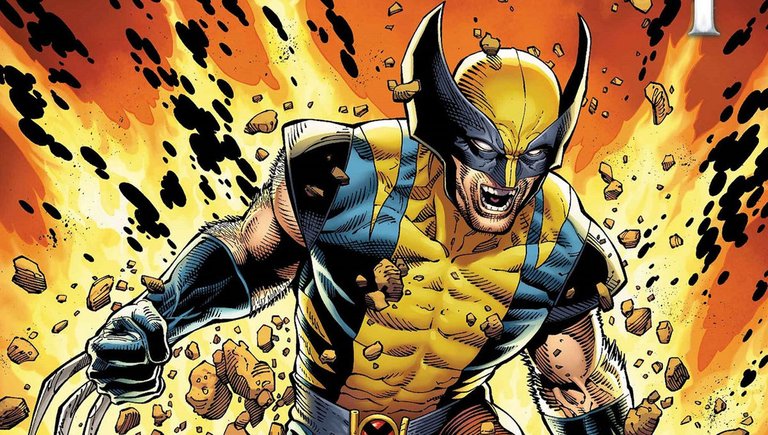
Wolverine carries himself in a similar way. He was psychologically dismantled like a high school geometry project and then reassembled to become the “ultimate killing machine”. That always cracks me up (not funny-haha-like-a-clown, mind you), as they get far more than what they bargained for with Logan. The Weapon Plus program worked on several iterations of programmable killing machines, and while Logan’s healing factor allowed him to physically survive the process that bonded adamantium to his skeleton, it also made him a liability as his mind functioned in the same way as his body. His brain blocked the trauma for a long time, causing him to forget some of the torture in an effort to allow him to heal. Unfortunately, violence was something to which Logan was no stranger. His first kill was at a young age, when his powers manifested. Although the movie “X-Men Origins: Wolverine” was not really that great of a movie, they did manage to capture the initial moment of violence in his life, and the lifetime of war that followed. “X-Men: Apocalypse” had a terrific scene with Weapon X being released inside of the facility, and his escape was in the cinema encapsulated the bloodiness of his exodus. Logan’s entire life is a bloodbath — either by his hands or by those of his enemies — and there is an animal inside of him that screams for revenge and hatred and rage. He plays jump rope with the line between man and beast, either by choice or by force. He’s a soldier, a spy, a samurai, a hero, a science project, a wildman; but most of all, he is a frightened, sickly boy who stumbled onto some hard truths and manifested his powers as a result.
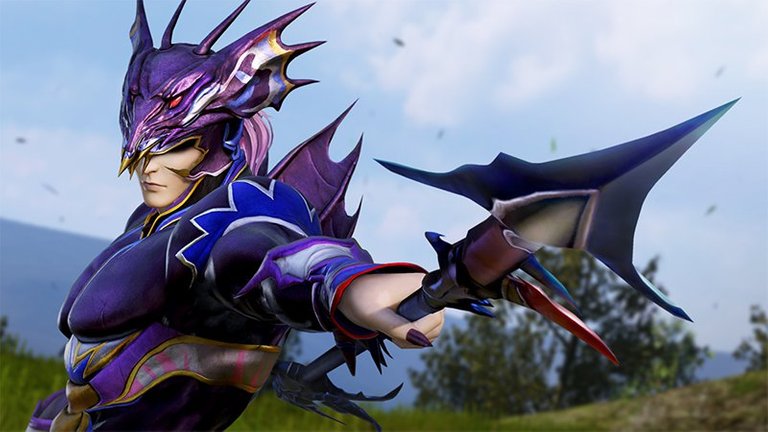
Kain Highwind and his best friend, Cecil Harvey, were raised as brothers. Kain followed his father’s footsteps in becoming a Dragoon (or Dragon Knight, in the Japanese version of the game). Final Fantasy IV is, by far, one of my favorite games in all of the history of video games. I fell in love with the graphics and soundtrack as a child when the game was released in North America as Final Fantasy II. The storyline was awesome, and the characters struck me. I was, of course, impressed with the badassery of the Dark Knight and the nobility of the Paladin. Something about Kain, however, always caught my attention. There is a romantic subplot between Cecil and Rosa, a White Wizard, which turns out to become a love triangle, as Kain is also in love with her. Twice in the game, Kain winds up with the opposition, although at the end he is freed of the influence of the bad guys and he rejoins the party for the duration. He’s easily one of the most powerful fighter-class characters in the whole game, and he is seeking to right the wrongs that he had performed — even though he could easily feign the intensity of the mind control spell, he instead admits that the mind control pushed him in the direction and he did little to resist due to his jealousy of Cecil. He’s a hard man, he’s a hurt man, and he’s a lonely man who is torn between his love and loyalty for his “brother” and his romantic feelings for Rosa. The game ends [c’mon now, the game was released in 1991, so you’ve had almost 30 years to play it…] and Kain is standing on a scenic overlook on one of the mountains, appropriately named Mt. Ordeals, and he is looking to make amends for the trouble and damage that he has caused. 2011 saw the 20th anniversary of Final Fantasy IV and the re-release of it for the PlayStation Portable (PSP), along with the sequel Final Fantasy IV: The After Years. Kain returns here again, and his part in all of it shows that he finally arrives at the redemption that he had been seeking. He had lost himself in the process, and in reclaiming himself and his status as a Dragoon, he becomes a Holy Dragoon. That’s redemption that can actually be seen in action, and he is not only mightier than before, but he knows that his strength is due to the fact that he has found forgiveness and absolution from both his friends and from himself. You have to love a guy who can make it all turn around like that.
Final Fantasy VI (or Final Fantasy III in the original N. American release) had its share of characters — 14 playable ones, to be exact — and all of them have a story. Most are complex enough, and many of them are looking for an opportunity to achieve or restore the balance that they had in their lives. Setzer Gabbiani was the sole owner of an airship. As is the case with most of the early Final Fantasy games, you wander about the world on foot or by more conventional means of transportation, occasionally upgrading to some sort of ship or even to a chocobo. Nothing says “fantasy” like cruising about on a really awesome bird, amirite? The airship becomes the must-have method of travel in the series, and Final Fantasy VI was no exception. Setzer loved to gamble, and he was known for his airship, his gambling, and his massive crush on the opera star Maria, who just so happened to resemble Celes Chere, a member of the party. Setzer has a back story that involves Darill, his lady friend of possible romantic interest; at the very least, they were BFFs, as the kids would say. Setzer and Darill would routinely gamble with and against each other, and each of them had a prized airship. Darill ended up crashing hers, and this crushed Setzer. After the events of the “End of the World,” Setzer is without an airship and is found drinking in a bar. He gets snapped out of his funk and rejoins the party, locates Darill’s airship, and takes to the skies once again. His search for fulfillment is met, and although he has lost Darill and he blames himself for his Blackjack not being able to keep up with her Falcon, he ends his scoundrel ways and becomes more respectable, more honorable.
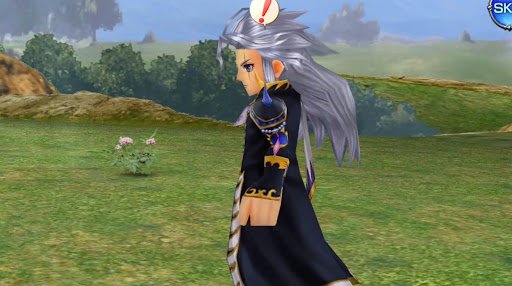
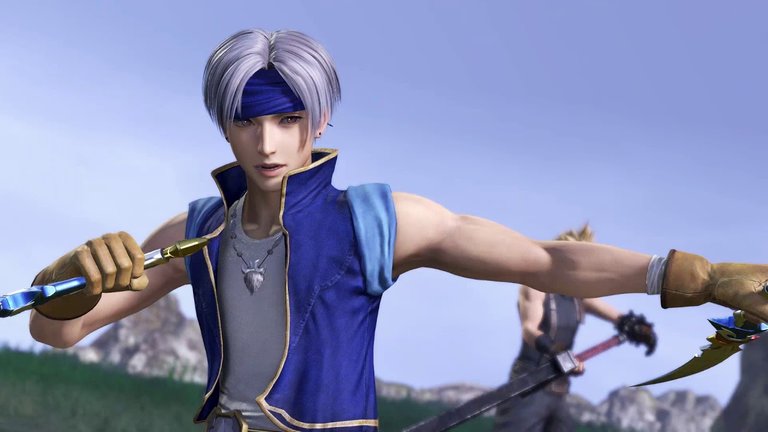
Locke Cole is the party’s thief, although “treasure hunter” is the nomenclature that he prefers. He, too, has a past, and his adventuring managed to get the love of his life, Rachel, injured. He managed to keep her alive, although just barely, through the intervention of a snake oil salesman who sold him a potion. Rachel is just trapped, and Locke finds that, while he is trying to help the rebellion, and he is a likable chap to whom the Moogles attach themselves, he is in desperate need of cash flow to keep paying the snake oil guy. Locke is a bit of a flirt, a natural gift that is amplified by his looks and attitude, since he has no agenda to date anyone else — until he meets Celes. Even still, he has no intentions to do anything except be a decent guy and free her from the enemy’s clutches. He only allows his feelings towards Celes to change after Rachel dies [it’s been 25 years, folks…], despite all of his best efforts to help sustain her and even bring her back. Locke struggles to make up for Rachel’s purely accidental injury, and her death was actually a liberating moment for him, as she begged him to let her go and to move on with his life. He will never forget her, and he is one of the few who finds the redemption that he had sought, allowing him to carry on with his life. He bears the scars and never forgets the lessons, but he is no longer burdened with the guilt and shame.
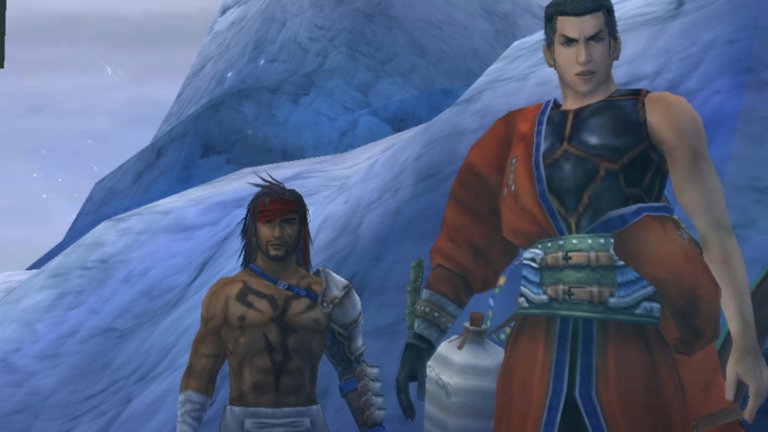
Auron, from Final Fantasy X, carries a sake jug, a massive katana, and a colossal amount of guilt. The entity known as Sin plagues the world of Spira, ravaging the planet with its destructive power. Auron was a guardian of the summoner Braska and, along with fellow guardian Jecht, guided Braska to get his Final Summon to defeat Sin. The problem is that Sin always manages to come back… and what the Summoners do not realize is that their Final Summon is based on a lie: there is no source for it, so it involves the sacrifice of one of their companions. Jecht becomes the Final Summon for Braska, who defeats Sin — resulting in the death of the Summoner every time. Not only that, but Sin is reconstituted from the now-deceased Summoner’s Final Summon. All of it is based on false hope. Ain’t that great? Auron, upon learning the truth, goes and confronts the powers-that-be, and unfortunately he gets smacked around. Ten years pass, and he has become almost a legend in Spira. He finds Jecht’s son and Braska’s daughter who is herself now a Summoner, and he becomes her guardian. There are moments when he will not accompany the party to certain locations, and the player would not necessarily realize that his reasons for hanging back are not just due to being a massive grumpy-pants at times. Turns out that [and guys… for pity’s sake… almost 20 years old now…] Auron is an unsent. When he had his confrontation with the powers-that-be, he didn’t just really get smacked around, he got the full treatment — he’s technically been dead for a full decade, but he refuses to give in to the eternal rest, as he still has a mission to accomplish. He refuses to go and be dead. Yeah, he’s a guy who needs some redemption. He’s not a zombie, he is just a strong-willed guy whose soul has reconstituted his body so that he can go back with a stronger team and kick the ever-loving daylights out of the powers-that-be. He misses his friend Braska, he is horrified at Jecht’s fate as the new Sin, and he does not want the same fate for Yuna and Tidus, the respective offspring of his companions, as their parents had met. No, this is a chance to do it properly and do it right. And once the mission has been accomplished and he has no need to remain, he will be content to be sent to the Farplane.
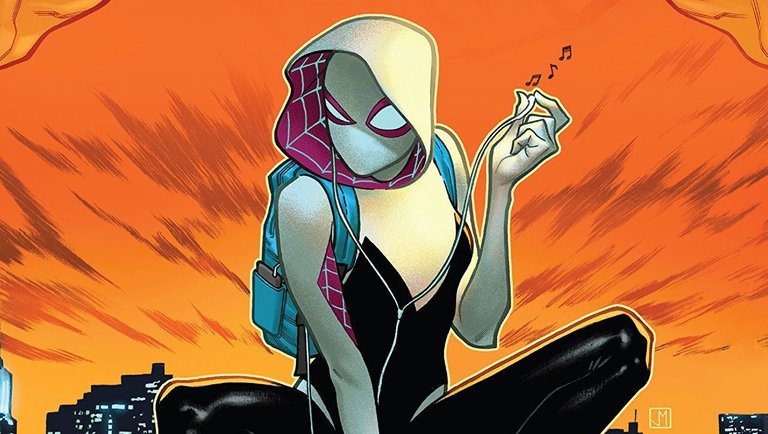
Gwen Stacey was thrown off a bridge by the Green Goblin. Peter Parker tried to save her, and it remains one of his most powerfully haunting failures. So when he, as the Amazing Spider-Man, winds up face-to-face with her while she is wearing a costume and has spider-powers just like his, needless to say he is thrown through a small loop. The strange thing is that this was not the first time that he had encountered Gwen Stacey since her death, although previously it had been clones of her. This Gwen was from another timeline or dimension, where instead of Peter getting bitten by the radioactive spider, Gwen was the recipient of the bite. She developed spider-powers and became Spider-Woman. She was graceful and strong and every bit the hero that Spider-Man has been in his dimension. There was one twist… for Peter Parker, gaining the spider-powers allowed him to feel strong and confident, it gave him the necessary outlet for his frustrations. Spider-Woman’s friend Peter did not have that… so he turned to science and turned himself into the Lizard. Spider-Woman fought the Lizard, not knowing it was one of her best friends in the whole world, and Peter’s body failed, unable to maintain the Lizard form, and he died as a result of the genetic manipulation and the stress of the fight with Spider-Woman. This was Spider-Woman’s equivalent of Spider-Man’s bridge incident, with the shoes on the other feet. Spider-Gwen became withdrawn, sullen, retreating to a dark place and hiding. Between this and the bizarre events of the Spider-Verse and subsequent Spider-Geddon events, and the troubles in her home dimension with her father, Gwen ended up in prison with her identity revealed to the world. All hopes of a normal life vanished as her superhero persona and private life ended up mashed together. She wants nothing more than to make up for her failure to help her best friend Peter Parker, for putting her father through personal and professional hell due to her activities as Spider-Woman, and for some of the back-alley deals she made along the way to help protect the people she loved. She’s finally starting to see the light as she reaches the surface of her funk, and one can only hope that she can, like Spider-Man, find it in her to keep quipping and thwipping.
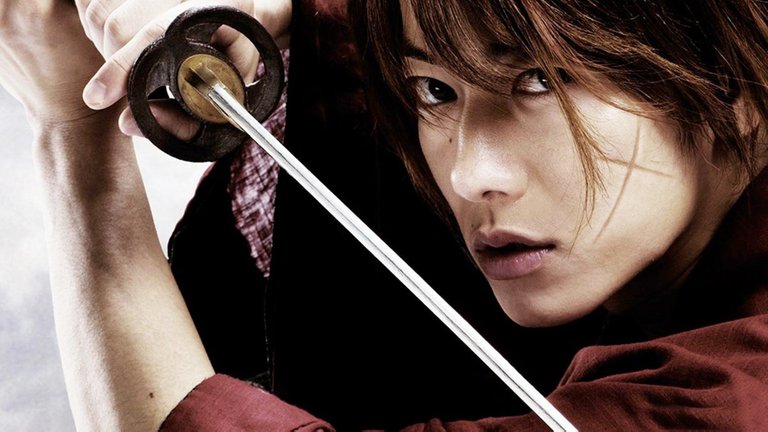
More than an assassin, he was a manslayer. He stepped out of the shadows and tore through his targets like rice paper. Blood was everywhere, but it was never his, save for two slashes on his cheek — one from a man he was sent to kill, the other from the man’s betrothed — that formed the cross-shaped scar. The stories vary between the manga, anime, and the live-action movies, but no matter which side he was on during the Meiji Revolution, Himura Kenshin was one of the best fighters of his day. One day, he just… stopped. There was no desire to shed blood left in him, as he was sickened by the sight and smell of it. He had carved a bloody path across Kyoto in his desire to use his sword to help the people. He then spent a decade wandering the country, helping those who were in need, assisting where he could, and trying to find a way to balance the scales for all of the killing he had done. Himura Kenshin traded his katana for a sakabato, a sword that is sharpened on the back instead of the leading edge, designed for nonlethal combat. He vowed not to kill, and he took that vow hyper-seriously, except in some extreme cases when the safety of his newfound friends and loved ones was placed in such peril and jeopardy that he felt he had absolutely no choice; fortunately, those same friends and loved ones pulled him back from the ragged edge. He knows that his hands will never be clean of the blood, that his soul is forever blackened, and that even when forgiven some things can never be forgotten. All Kenshin wants is to have the peace in his heart that he had been trying to bring to the land.
No matter who you are, no matter what you have done, currently do, or will do, you will have made mistakes, errors. We all have flaws and imperfections, and some of us bear the weight of our sins. We are constantly seeking redemption and forgiveness in a world that does not forgive, in a world that does not forget in order to maintain the lack of forgiveness, in a world that never acknowledges change and growth. We see it in our families, how grandparents and aunts and uncles treat us as if we are still small children despite our accomplishments as adults. We see it with ex-cons who, despite having been rehabilitated and being truly remorseful for their crimes, are still labeled by their one-time actions. We see it with people in the workplace, bosses and supervisors as well as peers, who view mistakes unfavorably and hold them over the heads of employees and coworkers. It is quite ironic that the same folks who are so hard-hearted and lack the forgiveness and purposely choose to acknowledge the change and growth in others are the same ones who will beg and plead for a second, third, or hundredth chance. There’s a great parable in the Bible regarding that, as seen in Matt 18:21-35 — a servant is forgiven his considerable debt, and yet he refuses to forgive a debt that is owed to him. I do not want to be like that — I have definitely forgiven much, and while forgetting is easier these days than it had been in the past, I still have acknowledged where I have been burned and I try my damnedest not to hold a grudge or maintain hatred. Sure, I have kept my distances, because forgiveness does not equal reconciliation, and reconciliation does not mean access. But I have forgiven, and keeping a distance is birthed from the fact that the person from whom I am distancing myself has not shown growth and change. There is nothing wrong with self-care, with avoiding sticking your hand back into the fire that burned you the first time, but also be open to giving people a chance to demonstrate that they have, indeed, changed, and for the better. Be forgiving of others as you want them to forgive you. And perhaps allow people the redemption that they struggle so hard to find.
Hello!
This post has been manually curated, resteemed
and gifted with some virtually delicious cake
from the @helpiecake curation team!
Much love to you from all of us at @helpie!
Keep up the great work!
Manually curated by @blewitt.
@helpie is a Community Witness.